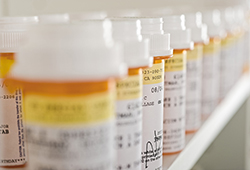
Laboratory tests play a critical part of the healthcare system. Ordering and billing for these tests, however, is not always cut-and-dry. Compliance with federal laws and rules (like the Clinical Laboratory Improvement Amendments (CLIA), the Anti-Kickback Statute (AKS), and the Eliminating Kickbacks in Recovery Act (EKRA) – not to mention Medicare billing requirements is essential. but, laboratory testing companies and physician practice groups must also pay attention to an array of state laws and regulations that place restrictions on which parties can bill for laboratory tests and for how much, among other requirements. These laws are important, as they can dictate significantly how, where, and with which entities laboratory testing companies do business. These laws can also have a significant impact on how physicians can order critical tests for their patients.
As laboratories and medical groups continue expand nationally, and the trend in mail-order laboratory testing, spurred by the COVID-19 pandemic, continues, it is important for both laboratories and practice groups not to overlook compliance with applicable state laws and regulations, including states’ direct billing, anti-mark-up, and disclosure laws.
What tests are at issue?
State laws regarding laboratory billing practices are focused on “anatomic pathology services.” This could include, for example, cytology, molecular pathology, hematopathology, histopathology, surgical pathology, and blood banking services performed by a pathologist. Put another way, state laws focused on billing for laboratory tests are concerned with those procedures that diagnose disease based on the macroscopic, microscopic, biochemical, and immunologic and molecular examination of organs and tissues.
Hypothetical Example: Patient Smith visits Dr. Jorgensen, a dermatologist. Dr. Jorgensen seeks to biopsy a suspicious mole that she spots when Patient Smith visits. Dr. Jorgensen’s practice group does not have an in-house laboratory with the capabilities needed to run the relevant pathology test. Dr. Jorgensen regularly sends tissue samples for processing to Oncology Lab LLC, a nationwide provider of pathology testing services for dermatologists and other specialists. Oncology Lab receives the tissue sample, conducts the relevant testing, and returns the test results to Dr. Jorgensen’s office to deliver to the patient. Oncology Lab charges $100 per test.
In the hypothetical above, for example, the referring physician and the lab that runs the test are both subject to a series of laws and about who can bill for these tests, who can pay for the tests, and how much can be charged, all depending upon where Dr. Jorgensen, Patient Smith, and Oncology Lab LLC are located. These state direct billing laws, anti-markup laws, and disclosure laws, apply regardless of whether the test is paid or covered by government insurance, commercial insurance, or the patient directly on a cash pay basis.
Direct Bill Laws
Many states have so-called “direct billing” laws that require the laboratory that performed the anatomic pathology services must bill the patient (or the patient’s payor, or a limited set of other individuals or entities) for the test. According to the College of American Pathologists (“CAP”), the idea is that “payment for anatomic and clinical pathology services should be made only to the person or entity who performed or supervised the service.” The purpose of these laws is to prohibit so-called “pass-through billing” or “client billing,” under which a laboratory bills the practice group that ordered the test, and the practice group then in turn bills the patient.
Under a direct billing model, the treating physician is not incentivized to order additional or unnecessary testing or to refer patients to one specific laboratory over another, simply on the basis of the amount of profit the treating physician might earn. Rather, the physician orders the tests that the patient needs, the laboratory runs the tests, and the laboratory bills the patient or payor for the tests. Direct billing, according to CAP, helps make certain that quality – as opposed to financial considerations – influence the physician’s selection of a pathology services laboratory.
Under a pass-through or client billing model, the treating physician can score an extra profit by charging the patient for the full price of the laboratory service that the physician received at a discount. This practice may also incentivize health care providers to choose certain laboratories (i.e., lower quality laboratories charging lower fees) or order certain laboratory tests (i.e., to increase profits) – both of which are not in the best interest of the patient.
Because of the perverse incentives, and the potential effect on quality of care, many states prohibit pass-through or client billing and mandate direct billing as the only acceptable pathology services billing practice. In fact, the pass-though billing prohibition under California law was spurred by a September 2005 Wall Street Journal article, titled How Some Doctors Turn a $79 Profit from a $30 Test. The article describes startling studies indicating that “physicians are more likely to order services for patients if they have a financial incentive.” An author of one such study by the Center for Health Policy, described in the article, stated that pass-through laboratory testing “appears to be done exclusively to earn more revenue and increase profits.”
For example, California law states, “A [licensed health care provider] shall not charge, bill, or otherwise solicit payment, directly or indirectly, for anatomic pathology services if those services were not actually rendered by that person or under his or her direct supervision.” [Cal. Bus. & Prof. Code § 655.7(a)(1).] New York law similarly restricts billing of clinical laboratory services to the “recipient of the services, such recipient being the person upon whom the clinical services have been or will be rendered.” [N.Y.P.H.L. § Sec. 586(1).]
Why Care?
First, state laws vary – while some states are only focused on tests that require the use of a pathologist to read the results, many other tests are not. Most states indicate that a laboratory can bill a patient, the patient’s payor, a patient’s representative, a patient’s employer or health plan, a patient’s union, or a relevant government agency; some states permit a laboratory to bill a health care facility or hospital for a pathology test; other states (like Maryland) appear to prohibit it. Similarly, some states’ laws apply where the patient is located, some apply where the provider who ordered the test is located, and others could even apply where the lab is located. Put another way, laboratories that operate in multiple states need to clearly understand the rules in all of their states of operation and may need to adjust and modify their practices accordingly. There is a potential lack of consistency across states that can create disruption and require complicated and administratively burdensome internal policies and practices.
Second, not all physicians may understand how direct billing works, especially when they order expensive laboratory tests for their patients. Some practice groups include billing for lab tests as part of their financial projections; however, direct bill laws may prohibit this practice and mandate that the laboratory that performed the test bills the patient directly. By failing to account for whether an entity is in a direct bill state or not, their financial projections may fall flat.
At the federal level, Medicare rules clearly require direct billing for outpatient hospital laboratory services – i.e., in order to receive Medicare reimbursement for a laboratory test, the laboratory must bill the patient or the payor directly – and pass-through billing is prohibited. However, physicians may be reimbursed for clinical laboratories services performed by third party laboratories so long as certain disclosures are made to Medicare. [45 C.F.R. § 405.515.] This adds yet another layer of complication for laboratory testing companies and for practice groups, as a patient’s status as a Medicare beneficiary must be factored into account.
Hypothetical Example: In a state with a direct billing requirement, Oncology Lab must bill Patient Smith (or Patient Smith’s insurance company or other relevant payor) the $100 for the cost of the mole biopsy test.
Anti-Markup Laws
A second type of law that applies to pathology testing services is the so-called “anti-markup” law. Anti-markup laws might technically permit a lab to bill a physician practice group for a test performed. But, these laws also prohibit the physician practice group from charging a patient or the patient’s payor any more than the amount the group paid to the lab.
At a national level, Medicare has a similar anti-markup rule, prohibiting physicians and practice groups from marking up the cost of purchased laboratory tests. The idea is “that allowing physician group practices or other suppliers to purchase or otherwise contract for the provision of diagnostic tests and then to realize a profit when billing Medicare may lead to patient and program abuse in the form of over utilization of services and result in higher costs to the Medicare program.” [71 Fed.Reg. 69624, 69688.]
Why Care?
First, and again, state laws vary. Therefore, laboratory companies’ business plans must vary by state and may not be subject only to the federal Anti-Markup Rule. Second, physician practice groups seeking to turn a profit on laboratory tests ordered from outside labs could easily run afoul of these state requirements. States that prohibit marking up laboratory services include like California, Michigan, and Oregon, as follows:
- Bus. & Prof. Code § 655.5(c). “It is also unlawful for any person licensed under this division or under any initiative act referred to in this division to charge additional charges for any clinical laboratory service that is not actually rendered by the licensee to the patient and itemized in the charge, bill, or other solicitation of payment…”
- Michigan, Comp. Laws Ann. § 445.161(1). “A person licensed to practice medicine by an agency of the department of licensing and regulation, a hospital, agency or any other entity billing patients or third parties for laboratory work, shall not bill a patient for laboratory work performed by a clinical laboratory for any amount in excess of the amount billed by the clinical laboratory to the licensed person for such services.”
- R.S. § 676.310(1). “…However, a practitioner shall not mark up, or charge a commission or make a profit on services rendered by an independent person or laboratory.”
Penalties for violation of state anti-markup rules include imprisonment for up to one year and/or fines ranging from $500 up to $10,000 – and may include reprimand by the state medical board.
Failing to comply with Anti-Markup Rule may also mean a violation of the federal Anti-Kickback Statute (AKS) and/or the Stark Law. Penalties for violating AKS include incarceration, exclusion from federal health care programs, and civil monetary penalties of $11,803 to $23,607 per claim, plus three times the amount of damages.
Hypothetical Example: In a state with an anti-markup rule and no direct bill rule, Oncology Lab may be able to bill Dr. Jorgensen for the $100 cost of the mole biopsy test. Dr. Jorgensen can then pass the test’s charge through to the patient; however, Dr. Jorgensen cannot charge the patient more than $100.
Disclosure Laws
A third type of state law governs the ordering of pathology testing services: disclosure laws. Disclosure laws do not technically prohibit labs from billing physician practice groups, and they also do not technically prohibit practice groups from marking up laboratory test prices. Instead, these laws require that a physician practice that purchases a test from a laboratory (and passes the cost of such test along to the patient) must disclose the price that the physician paid for the test to the patient and the applicable non-federal third-party payors. These laws do not ban markups for laboratory services, so long as the markup is disclosed. States with disclosure laws include but are not limited to, Arizona, Pennsylvania, and Texas, as follows:
- Stat. Sec. 36-472(B). “The bill to the patient shall specify the actual charge by the reference laboratory together with the reasonable specimen collection charge by the referring laboratory or physician.”
- Admin. Code § 5.48. “A notification of charges for laboratory tests performed for the patient shall be sent to the patient by the clinical laboratory unless the patient has been billed directly or otherwise notified of the charges by the laboratory.”
- Health & Saf. Code § 161.061. “(a) A person licensed in this state to practice medicine, dentistry, podiatry, veterinary medicine, or chiropractic may not agree with a clinical, bioanalytical, or hospital laboratory to make payments to the laboratory for individual tests, combinations of tests, or test series for a patient unless:
-
- the person discloses on the bill or statement to the patient or to a third party payor the name and address of the laboratory and the net amount paid to or to be paid to the laboratory; or
- discloses in writing on request to the patient or third party payor the net amount.
(b)The disclosure permitted by Subsection (a)(2) must show the charge for the laboratory test or test series and may include an explanation, in net dollar amounts or percentages, of the charge from the laboratory, the charge for handling, and an interpretation charge.”
Why Care?
Importantly, physician practice groups need to be aware when they are operating in a disclosure state so that their billing and invoicing systems are appropriately calibrated to include any lab testing costs.
In addition, we often think of the federal ban on pass-through billing and the federal anti-markup rule, but laboratories, hospitals, and physician practice groups that order lab tests from outside labs should be aware of and make sure their practices comply with this complicated web of state requirements. Providers may be using one compliance model to comply with federal laws in connection with federal health care programs, but such model may violate applicable state laws.
Hypothetical Example: In a state with a simple disclosure requirement, Oncology Lab could submit a bill to Dr. Jorgensen (instead of Patient Smith); however, when Dr. Jorgensen bills Patient Smith for the test, the physician must also disclose that she paid Oncology Lab $100 for the test.
Nationwide telehealth groups and digital health providers ordering tests for patients located in different states or hospitals, laboratories, or physician groups ordering laboratory tests from outside their home state, may also prefer a one-size fits all model; however, this might require tailoring all operations to fit the strictest regime of no pass-through billing or markups across the board. Other providers – particularly those that are more local or regional in nature – might find it more feasible to have a state-by-state model with laboratory billing policies and procedures tailored to each state. Further, Medicare providers may find it easiest and most efficient to implement Medicare markup restrictions for all laboratory billing, including cash pay and commercial patients.
* * * * *
As depicted above, states vary widely on their regulation of laboratories and violations of state law may trigger not only civil penalties but criminal prosecution as well. Laboratory testing companies and physician practice groups should pay particular attention to their policies and compliance programs, which must be crafted to account for these additional complexities. In addition, existing laboratories and physician practice groups should analyze and update their compliance policies to ensure that they are aligned with existing state and federal requirements.
For questions regarding current laboratory compliance with federal and state laws or for questions related to expansion and compliance concerns, please reach out to Anne Brendel at abrendel@goodwinlaw.com or Matt Wetzel at mwetzel@goodwinlaw.com.
 On September 28, 2022, the U.S. Food and Drug Administration (“FDA” or “the Agency”) issued its long-awaited final guidance, “Clinical Decision Support Software” (the “CDS Guidance”). The CDS Guidance follows the Agency’s September 2019 draft guidance of the same name (the “Draft Guidance”) and seeks to clarify several key concepts for determining whether clinical decision support (“CDS”) software is a medical device.
On September 28, 2022, the U.S. Food and Drug Administration (“FDA” or “the Agency”) issued its long-awaited final guidance, “Clinical Decision Support Software” (the “CDS Guidance”). The CDS Guidance follows the Agency’s September 2019 draft guidance of the same name (the “Draft Guidance”) and seeks to clarify several key concepts for determining whether clinical decision support (“CDS”) software is a medical device.
 During the COVID-19 public health emergency, the United States Food and Drug Administration (FDA) has issued hundreds of Emergency Use Authorizations (EUAs) and numerous enforcement policies to facilitate the availability of important medical devices. On December 23, 2021, FDA published two draft guidances setting forth the Agency’s proposed process for transitioning the multitude of devices brought to market under these circumstances to full compliance with FDA requirements:
During the COVID-19 public health emergency, the United States Food and Drug Administration (FDA) has issued hundreds of Emergency Use Authorizations (EUAs) and numerous enforcement policies to facilitate the availability of important medical devices. On December 23, 2021, FDA published two draft guidances setting forth the Agency’s proposed process for transitioning the multitude of devices brought to market under these circumstances to full compliance with FDA requirements:

 Last week, Diana DeGette (D-CO) and Fred Upton (R-MI) introduced in the House highly anticipated bill language for “Cures 2.0”, a follow-up to the transformational 21st Century Cures Act enacted in 2016. For full text of the bill, click
Last week, Diana DeGette (D-CO) and Fred Upton (R-MI) introduced in the House highly anticipated bill language for “Cures 2.0”, a follow-up to the transformational 21st Century Cures Act enacted in 2016. For full text of the bill, click 

 Goodwin Life Sciences and Healthcare partner
Goodwin Life Sciences and Healthcare partner